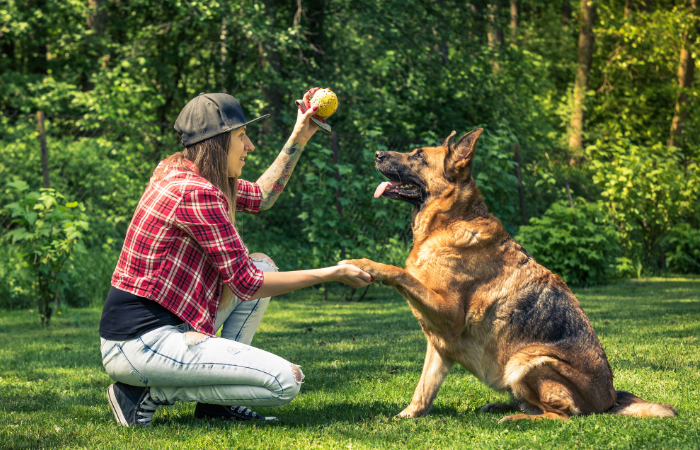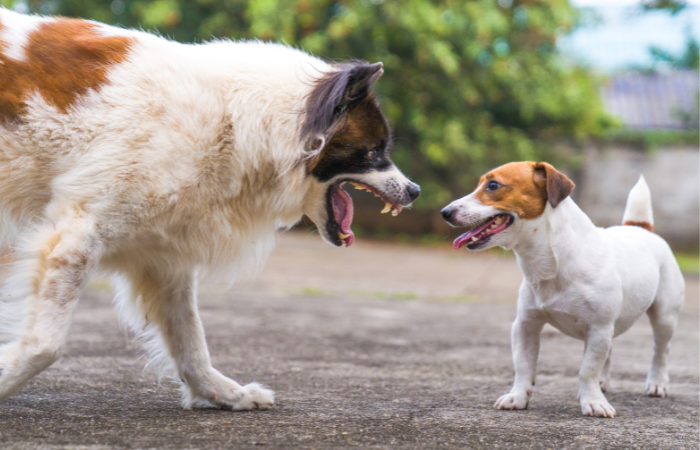Understanding Canine Behavior
Understand dogs' motivations before changing their behavior. Genetics, environment, training, and socialization affect dog behavior. Misbehavior frequently results from uncertainty, anxiety, or unfulfilled needs. You may customize your approach to behavior modification by knowing what motivates your dog's actions.
Establishing the Foundation: Consistency and Patience
Consistency is key in any form of training or behavior modification. Dogs thrive on routine and clear expectations. Set rules and stick to them, ensuring that all family members do the same. Patience is equally important; behavior change doesn't happen overnight. Be prepared to invest time and effort into your dog's behavioral adjustments.

Positive Reinforcement: Reward-Based Training
One effective strategy for changing behavior is positive reinforcement. It entails giving your dog praise for appropriate conduct, which will encourage them to repeat it. Rewards can include treats, praise, toys, or playtime. Focus on what your dog is doing right rather than punishing them for mistakes.
Clicker Training: Precision and Timing
Clicker training is a form of positive reinforcement that uses a distinct sound to mark the exact moment your dog performs the desired behavior. Follow the click with a treat, creating a strong association between the behavior and the reward. Clicker training enhances communication with your dog, making it clear which actions are correct.
Desensitization and Counterconditioning: Addressing Fear and Aggression
Desensitization involves gradually exposing your dog to the source of their fear or aggression in controlled settings, starting at a level that doesn't provoke a reaction and slowly increasing exposure. Counterconditioning pairs the feared object or situation with something positive, like treats or play, changing the dog's emotional response over time.

Setting Boundaries: Crate Training and Safe Spaces
Crate training provides a safe haven for dogs and helps with managing destructive behaviors when unsupervised. Introduce the crate gradually, making it a pleasant space with comfortable bedding and toys. Never use the crate as punishment; it should always be a positive retreat.
Socialization: Preventing Behavioral Problems
Proper socialization can prevent many behavioral problems. Expose your dog to various people, animals, environments, and situations from an early age. Positive experiences during these formative periods can reduce fear and aggression in adult dogs.
Professional Help: When to Seek Assistance
Don't be afraid to get professional assistance if you're having trouble with your dog's behavior. More serious problems like aggression or separation anxiety can be addressed with individualized advice from licensed dog trainers and animal behaviorists.

Incorporating Technology: Apps and Gadgets
Several apps and gadgets can assist with behavior modification. From remote-controlled treat dispensers to apps that help track progress in training, technology offers innovative ways to support your efforts.
The Role of Exercise in Behavior Modification
Exercise is a vital component of a well-rounded behavior modification plan. Adequate physical activity helps expend excess energy that might otherwise contribute to hyperactivity or destructiveness. Regular walks, playtime, and exercise cater to your dog's physical and mental well-being.
Conclusion
Behavior modification in dogs requires understanding, consistency, patience, and the right techniques. Remember that every dog reacts differently to crate training, clicker training, desensitization, positive reinforcement, or professional help. By following a plan and considering your dog's needs, you may modify his behavior and have a happier, less stressful connection with him.








